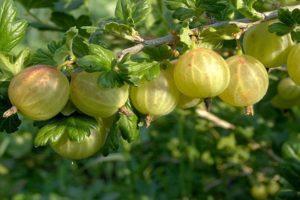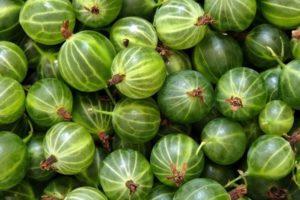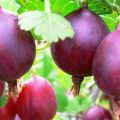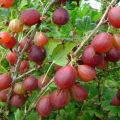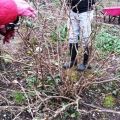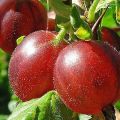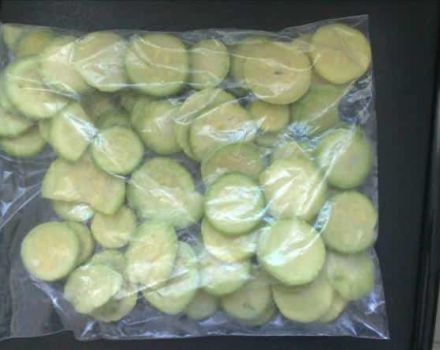Description of the gooseberry variety Belarusian sugar, planting and care
The high popularity of the Belarusian Sugar gooseberry is due to its unpretentiousness to growing conditions, care and excellent taste. Its fruits contain a high concentration of vitamins and minerals, organic acids, pectins, flavonoids and other bioactive compounds. In order for a garden shrub to bear fruit abundantly and stably, it is necessary to know its varietal characteristics and some planting rules.
Gooseberry Belarusian sugar: description, characteristics
The variety was obtained by crossing two known varieties of gooseberries - White large and Belorussky, on the basis of the Institute of Fruit Growing of the National Academy of Sciences of Belarus. The plant is of medium early ripening, the fruits are harvested in mid-July. The bush is characterized as tall, its height is 1 meter, the spreading of the shoots is average. The degree of prickling in the Belarusian sugar gooseberry is also average, there are single, double and triple thorns.
The fruit shrub grows well and develops in areas with clay and loamy soil. It bears fruit for 12-18 years. The harvest is positioned as large, the weight of the berries is 9-10 grams. Their color is light green, the shape is oval, consumer qualities are excellent: the pulp is sweet, the taste is balanced. The Belarusian sugar gooseberry harvest has a universal purpose.
The tasting score of gooseberry fruit is 4.8 points out of 5. The sugar content in the berries is 14%, and the acid content is only 2%. The Belorussky Sugar variety is distinguished by an average degree of resistance to powdery mildew, anthracnose. The plant is not afraid of low temperatures, high winter hardiness.
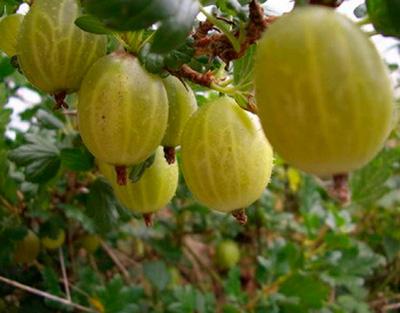
Advantages and disadvantages
When growing Belarusian sugar gooseberries, experienced gardeners note the following positive characteristics:
- self-fertility;
- early maturity;
- does not cause difficulties when growing;
- not afraid of harsh winters;
- increased immunity to fungal diseases;
- high rates of productivity;
- versatility of fruits;
- large-fruited.
Of the shortcomings of the Belarusian sugar gooseberry, it is worth highlighting only the presence of a large number of thorns, which complicate the process of picking ripe berries. But on the other hand, thanks to the thorns, the plant does not overheat in the sun and tolerates dry weather more easily.
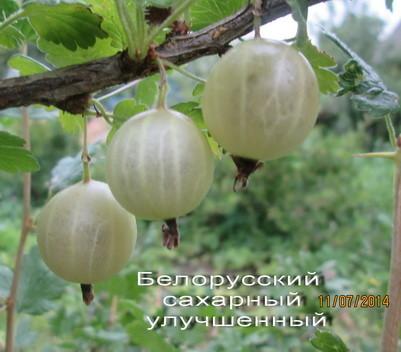
How to grow a crop correctly
To achieve high results, it is necessary to adhere to certain recommendations when planting the Belarusian Sugar gooseberry.
Preparing the landing site
Since the Belarusian sugar gooseberry is a light-loving crop, for planting it, it is necessary to give preference to areas with a good level of lighting, partial shade will not work. Otherwise, the fruit will be small and of poor quality.
In addition, the plant must be protected from through winds, it is better to choose a place near buildings, a fence.
Preparatory work involves the cleaning of weeds from the site by using continuous herbicides such as Hurricane, Roundup. Pre-planting and plowing of green manure crops (rye, mustard) have a beneficial effect on the shrub. Such a simple agricultural technique makes it possible to improve the aeration and nutritional value of the soil for planting Belarusian sugar gooseberries.
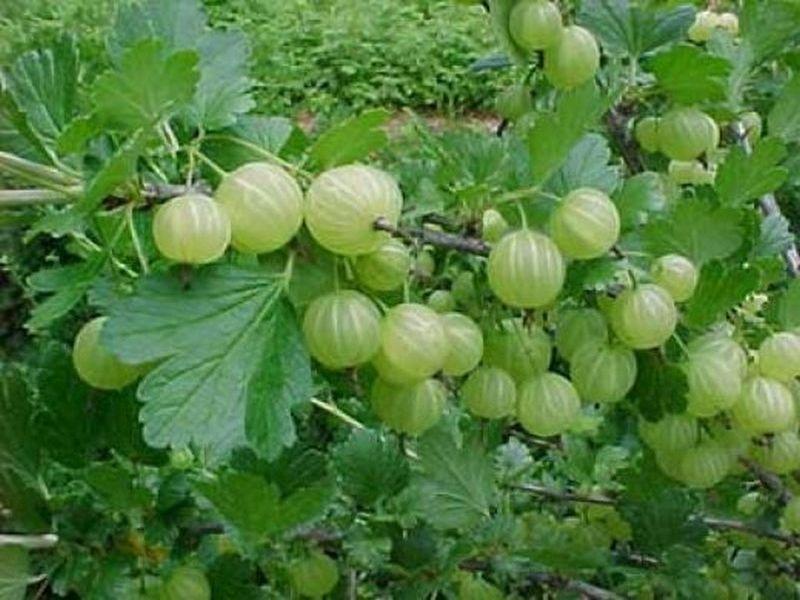
In addition, you need to add humus or compost to the soil at the rate of 6-10 kilograms per 1 square meter. It is possible to prevent the development of diseases in the future and the appearance of various harmful insects with the help of fumigation - treatment of the site with special preparations.
The soil that gooseberries love
It is best to plant Belarusian sugar gooseberries on loams, sandy loam soils, black soil. Planting in a swampy area, with a close occurrence of groundwater, heavy loam, sand, is ineffective - a bush on such soils often gets sick. Abundant yields are obtained if the plant is planted in the ground with an acidity of 6-6.5.
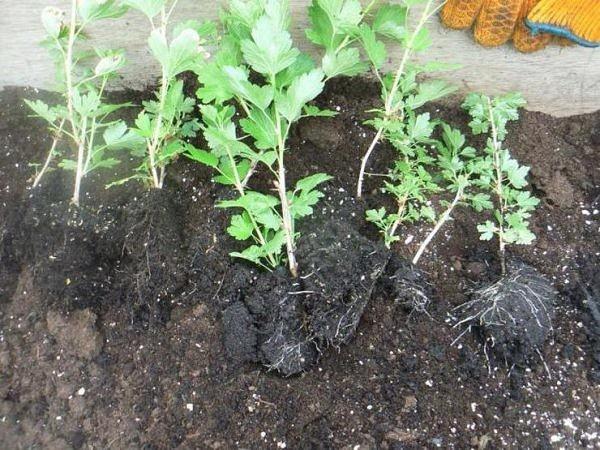
The choice of planting material
When buying a Belarusian sugar gooseberry, you should pay attention to its appearance. Especially on the condition of the root system - it must be healthy, without signs of disease. The best option is to purchase planting material in a specialized nursery or from trusted sellers.
Considering that the variety is often propagated by layering, then one copy should have one or more shoots with a thickness of 5 millimeters, with 2-3 skeletal roots (length - from 15 centimeters). To check the viability of the seedling, you need to make a cross-section of the root, it should have a white or cream color. Material with brown, gray or black cut should be excluded.

Landing technology
Belarusian sugar gooseberries are planted, adhering to the following algorithm of actions:
- Dig planting holes 50 × 50 centimeters in size and 60 centimeters deep.
- Add a mixture of humus (10 kilograms), superphosphate (200 grams) and potassium fertilizer (30 grams) to each hole.
- Pour 3-5 liters of water, when it is absorbed, add the same amount.
- Place the seedling in the center of the hole, spread the roots and cover with soil. At the same time, it is not recommended to deepen the root collar by more than 5-7 centimeters - in this way, the formation of new replacement shoots can be achieved.
After a day, loosen the soil, mulch to avoid rupture of the roots when the soil dries out.
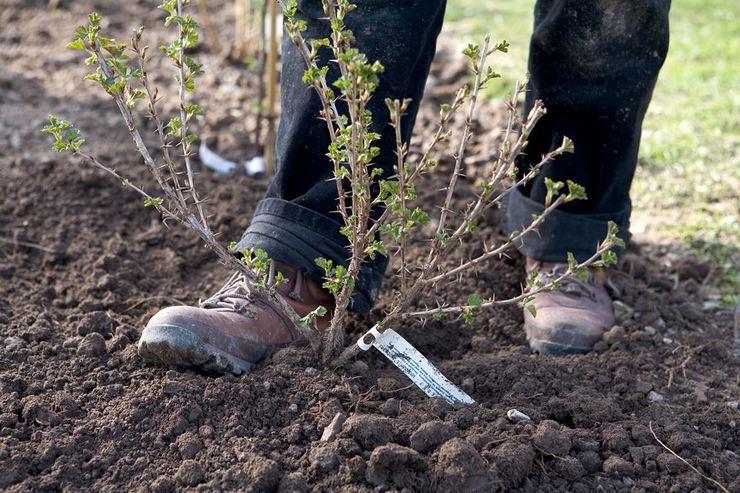
Gooseberry care Belarusian sugar
Competent care of the fruit crop is the key to a rich and tasty harvest.
Watering and feeding
The bush should be irrigated in dry and warm weather once every 7-10 days. Gooseberries have an increased need for watering during the flowering stage, during the formation of ovaries and during the development of berries. The last irrigation is carried out 2 weeks before the day of harvest. When the fruits are harvested, watering is resumed in order to lay the high productivity of the bush for the next season. It is better to water the plant at the root, the method of sprinkling in this case is not relevant.
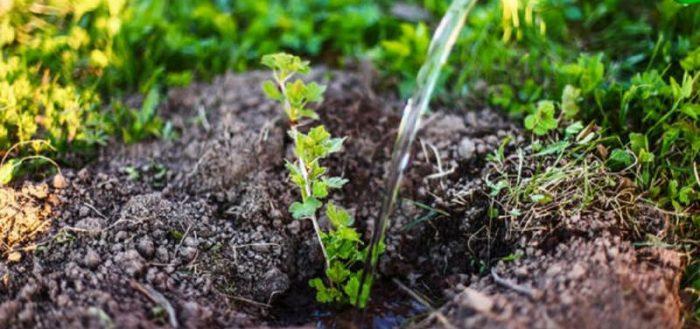
Feeding procedures with mullein, bird droppings or mineral complexes are performed annually on depleted soils, and on fertile soils - once every 3 years.The introduction of wood ash, where there is a lot of potassium, will also help to fight parasitic individuals.
Bush formation
It is allowed to prune Belarusian sugar gooseberries either in spring - before bud break, or in autumn - after harvesting. Since the plant is quite plastic, it can be given the most unusual shapes. The variety is grown both in the classic version, and in the form of one-shoulder and two-shoulder cordons, stanza, on a trellis.
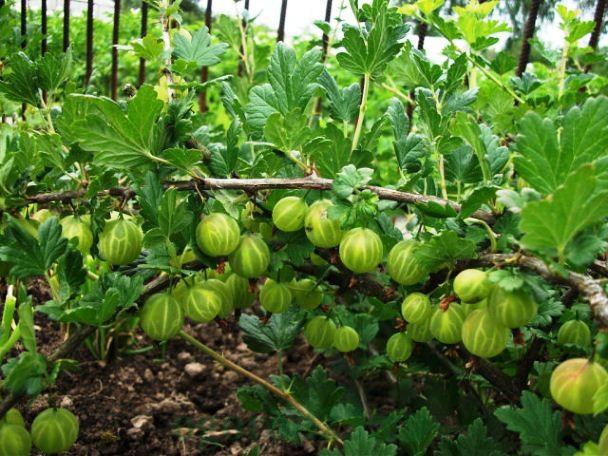
Shelter for the winter
According to the description of the variety, the bush has a sufficient level of frost resistance. But in the case of a winter with little snow, it is recommended to mulch the soil in the near-trunk circle with rotted manure, straw, spruce sawdust. Improved Belarusian sugar gooseberries should also be sheltered for the winter.
Diseases, pests and prevention
In early spring, the old mulch should be removed, after pouring 3-5 liters of hot water (80 degrees) under each bush. This will help get rid of fungi and pests that winter in the ground. The mulch needs to be replaced with a new one.
In addition, it is good to cultivate the land under the bush before budding with Bordeaux mixture of 1%. Before the formation of buds, Karbofos is used to protect the shrub from aphids, gall midges, sawflies. Colloidal sulfur (30 grams per 10 liters of water) is used to combat kidney mites.
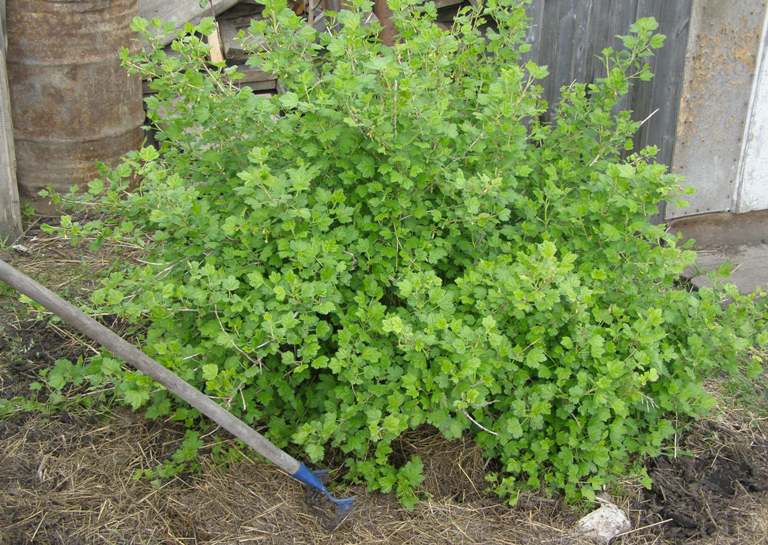
Gooseberry propagation
Fruit culture is bred either by layering or cuttings. The main thing is to know the features of each method.
Layers
In the spring, for the reproduction of the Belarusian sugar gooseberry, they choose a strong shoot, bend it to the ground and sprinkle it with soil. It is watered periodically, and as the shoots appear, they spud. In the fall, it is separated from the mother bush and planted in a prepared place.
Cuttings
The material for breeding the variety is harvested in mid-June, choosing powerful lateral growths from last year. The upper part 5-6 centimeters long is cut off from them, all leaves are cut off, leaving only the top two. The cuttings are planted in a mini-greenhouse at a distance of 7 centimeters from each other. They need to be watered, covered with glass, foil and shaded. The care consists in airing, regular irrigation and loosening of the soil.
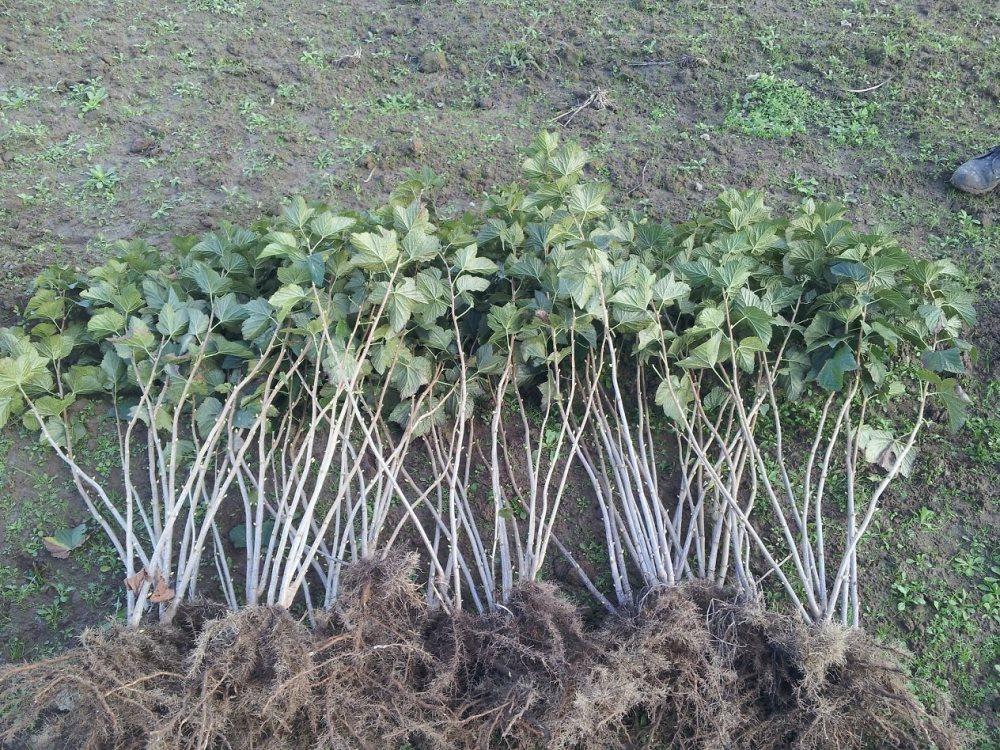
Harvesting
If the berries are transported over long distances, then they are removed 5-7 days before full ripening. For fresh consumption and as a raw material for wine, the fruits are harvested already ripe.
Storage rules
A ripe crop is stored for only 4-5 days, and an unripe crop - 14 days. Before placing the berries in the refrigerator, you need to sort them out, put them in paper bags, they cannot be washed. If the crop is placed in the freezer, then it is also examined, the spoiled berries are removed, washed and laid out in one layer on a suitable surface (chopping board). After freezing, the fruits are poured into an airtight container.
The Belarusian sugar gooseberry is an unpretentious and high-yielding plant. It is not difficult to grow it, the main thing is only to observe the basic agricultural practices.
